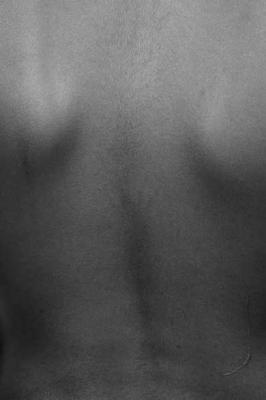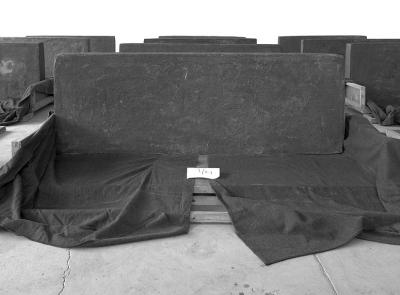There are an infinite number of better puns I might make about this story, but I’d be violating my kawaii-safe rule in doing so. Via Art News Blog, artist Santiago Sierra has unveiled a new exhibition at the Lisson Gallery in London:
21 ANTHROPOMETRIC MODULES MADE FROM HUMAN FAECES BY THE PEOPLE OF SULABH INTERNATIONAL, INDIA
The work is made of 21 modules of human faeces, each measuring 215 x 75 x 20cm. […] Workers of the sanitary movement Sulabh International of India are mostly scavengers who, by birth, have to undertake the physically and psychologically painful task of collecting human faecal matter, being charged with the blames of a previous life of bad deeds.
It’s a striking work, each slab reminiscent of the Monolith from 2001: A Space Odyssey (but of course, representing almost the exact opposite). ArtNewsBlog appreciates the installation on multiple levels:
There’s a message that the artist wants to get across, which could be honorable or mocking, depending on which side of the fence you choose to sit. The optimist in me sees an artist highlighting the exploitation of a group of people that need a hand up. The cynic in me sees an artist doing something shocking for the sake of publicity (exploiting the media). The humorous me sees an artist shi$%ing on the floor of an upmarket art gallery and laughing at those that take it seriously (exploiting the gallery and public).
I’m inclined to give Sierra the benefit of the doubt with respect to being merely a publicity seeker, though the PR aspect is undeniable. Still, as an artist, Sierra’s focus is on class issues. For example, another work of his, “Economical Study of the Skin of Caracans“, touches on a similar theme (details below the fold). At any rate, the art does at minimum force the viewer to wonder how such an enormous pile of shi% could be assembled, and the physical reality of it in front of the eyes attunes their mind to the plight and working conditions of these laborers at the bottom of the bottom of India’s society, a depth which we simply cannot fathom from our everyday experience alone.
I confess that my ethnic heritage drives my interest in this art; I’ve been on a tear recently about Indian laborers working in Dubai at my political blog recently as well. This is the kind of art I like – simple, understated, and yet carrying a hefty social message, not overly preachy but relying on the innate compassion of the viewer to make the connection.
 Here’s the other work by Sierra which I find intriguing – a quantification of the correlation between skin color and economic circumstance in Venezuela.
Here’s the other work by Sierra which I find intriguing – a quantification of the correlation between skin color and economic circumstance in Venezuela.
Economical Study of the Skin of Caracans, 2006, is the first of three projects Sierra has realized in Caracas in the last year. The work is made of 35 black and white photographs. Although the piece has been made possible by the involvement of individuals who agreed to have their backs photographed, the subject of the work is not labour, but the socio-economical and racial segregation that still characterises the Venezuelan capital. The work’s central elements are ‘political monochromes’, whose different gradation of greys, black and white represent the economic circumstances of individuals in relation to the colour of their skin. This work embodies many of the elements that have made Sierra’s work prominent: the concurrent beauty and repulsiveness of the body, the economy of means of the presentation, and the articulation of issues of power and social division into formal equations.
